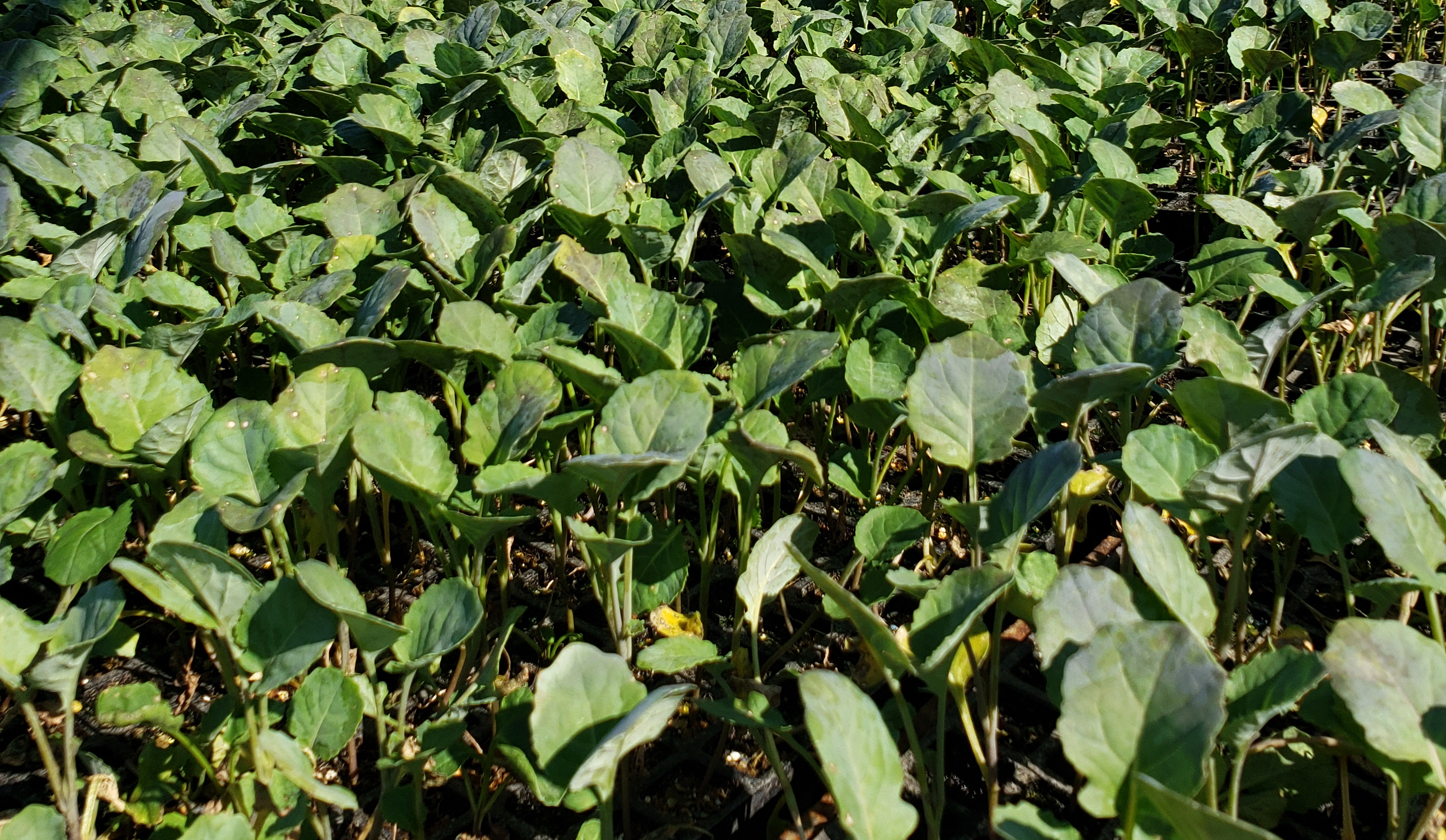J. Chaput, OMAFRA, Minor Use Coordinator, Guelph
The Pest Management Regulatory Agency (PMRA) recently announced the approval of a minor use label expansion registration for Trianum P Biological Fungicide for:
- the Suppression of Post-Emergence Damping Off Caused by Rhizoctonia solani and Pythium ultimum and Fusarium Root Rot Caused by Fusarium oxysporum on Sowing of Greenhouse Vegetables (Bulb Vegetables, Leafy Vegetables, Brassica Vegetables, Fruiting Vegetables and Cucurbit Vegetables) and Greenhouse Herbs
- the Suppression of Post-Emergence Damping Off Caused by Rhizoctonia solani and Pythium ultimum and Fusarium Root Rot Caused by Fusarium oxysporum on Transplanting and Repotting of Greenhouse Vegetables (Bulb Vegetables, Leafy Vegetables, Brassica Vegetables, Fruiting Vegetables and Cucurbit Vegetables), Greenhouse Herbs, Greenhouse Strawberries and Indoor-Grown Cannabis
- the Suppression of Post-Emergence Damping Off Caused by Rhizoctonia solani on Field Grown Vegetables (Bulb Vegetables, Leafy Vegetables, Brassica Vegetables, Fruiting Vegetables and Cucurbit Vegetables), Herbs, Cannabis and Hemp
Trianum P Biological Fungicide was already labeled for use on a wide variety of crops in Canada for control of several diseases.
The following is provided as an abbreviated, general outline only. Users should be making pest management decisions within a robust integrated disease management program and should consult the complete label before using Trianum P Biological Fungicide.
|
Sowing of greenhouse vegetables (including bulb vegetables, leafy vegetables, Brassica vegetables, fruiting vegetables, cucurbit vegetables) and greenhouse herbs |
| Crop(s) | Target | Rate | Application Information |
|
Greenhouse vegetables: Bulb vegetables (CG3-07), Leafy vegetables (CG4-13), Brassica vegetables (CG5-13), Fruiting vegetables (CG8-09), Cucurbit vegetables (CG9), Herbs (old CG19A) |
Post-emergence damping off caused by Rhizoctonia solani and Pythium ultimum Fusarium root rot caused by Fusarium oxysporum |
1.5 g/m2 of cultivated area, suspended in 2.5-5 L of water | One drench application immediately after sowing seeds or sticking cuttings |
Transplanting and repotting of greenhouse vegetables (including bulb vegetables, leafy vegetables, Brassica vegetables, fruiting vegetables, cucurbit vegetables), greenhouse herbs, greenhouse strawberries and indoor-grown cannabis
| Crop(s) | Target | Rate | Application Information |
|
Greenhouse vegetables: Bulb vegetables (CG3-07), Leafy vegetables (CG4-13), Brassica vegetables (CG5-13), Fruiting vegetables (CG8-09), Cucurbit vegetables (CG9), Herbs (old CG19A), GH strawberries, Indoor-grown cannabis |
Post-emergence damping off caused by Rhizoctonia solani and Pythium ultimum
Fusarium root rot caused by Fusarium oxysporum |
Start drench application directly after planting |
High Crop Density: Apply 3 g/m2 of cultivated area. Use a water volume equivalent to 10% of the substrate volume or 2-5 L/m2. Use a half-rate dose (1.5 g/m2) if plants have been treated with TRIANUM P previously. Repeat the half-rate booster dose every 10 weeks or after potting-on. Low Crop Density or in Rows: Apply 30 g/1000 plants. Use a water volume equivalent to 10% of the substrate volume or 100 litres/1000 plants. Use a half-rate dose (15 g/1000 plants) if plants have been treated with TRIANUM P previously. Repeat the half-rate booster dose every 10 weeks or after potting-on. |
|
Field-grown vegetables (including bulb vegetables, leafy vegetables, Brassica vegetables, fruiting vegetables, cucurbit vegetables), herbs, cannabis and hemp |
| Crop(s) | Target | Rate | Application Information |
|
Field Grown vegetables: Bulb vegetables (CG3-07), Leafy vegetables (CG4-13), Brassica vegetables (CG5-13), Fruiting vegetables (CG8-09), Cucurbit vegetables (CG9), Herbs (old CG19A), Field-grown cannabis and hemp |
Post-emergence damping off caused by Rhizoctonia solani |
After Sowing: 1.5 g/m2 of cultivated area in 1.33 L of water. After transplanting: 6 g in 1 L of water and apply 500 L/ha of suspension. |
Start drench application immediately after sowing seeds or transplanting, repeat every 10 weeks. |
Do not apply or allow drift of Trianum P Biological Fungicide to other crops or non-target areas. Do not contaminate off-target areas or aquatic habitats when spraying or when cleaning and rinsing spray equipment or containers.
Follow all other precautions, restrictions and directions for use on the Trianum P Biological Fungicide label carefully.
For a copy of the new minor use label contact your local crop specialist, regional supply outlet or visit the PMRA label site https://www.canada.ca/en/health-canada/services/consumer-product-safety/pesticides-pest-management/registrants-applicants/tools/pesticide-label-search.html

0 comments on “Trianum P Biological Fungicide label expanded via Minor Use Program for suppression of diseases on greenhouse and field vegetables in Canada”